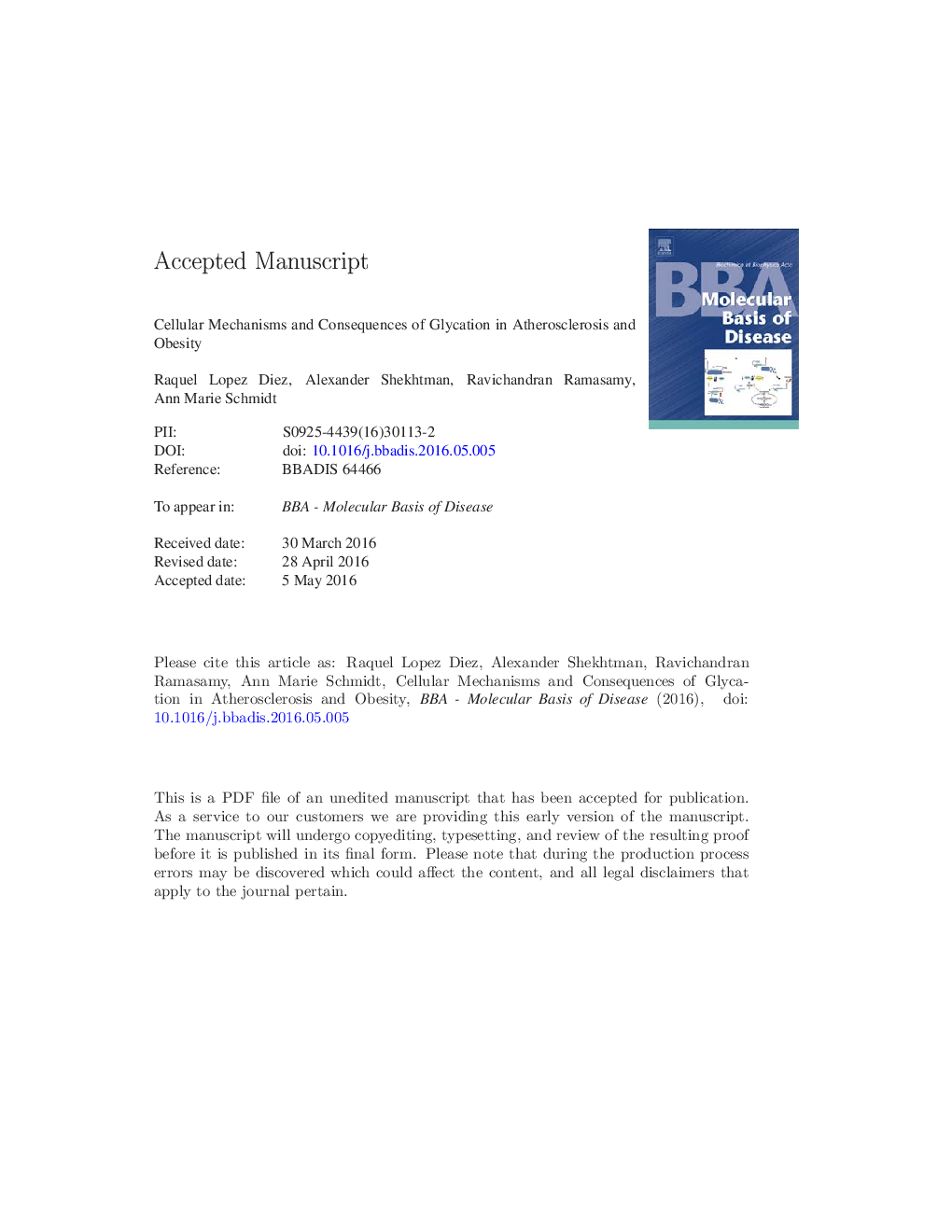| کد مقاله | کد نشریه | سال انتشار | مقاله انگلیسی | نسخه تمام متن |
|---|---|---|---|---|
| 5501203 | 1534627 | 2016 | 36 صفحه PDF | دانلود رایگان |
عنوان انگلیسی مقاله ISI
Cellular mechanisms and consequences of glycation in atherosclerosis and obesity
ترجمه فارسی عنوان
مکانیسم های سلولی و عواقب ناشی از گلایشی در آترواسکلروز و چاقی
دانلود مقاله + سفارش ترجمه
دانلود مقاله ISI انگلیسی
رایگان برای ایرانیان
کلمات کلیدی
موضوعات مرتبط
علوم زیستی و بیوفناوری
بیوشیمی، ژنتیک و زیست شناسی مولکولی
سالمندی
چکیده انگلیسی
Post-translational modification of proteins imparts diversity to protein functions. The process of glycation represents a complex set of pathways that mediates advanced glycation endproduct (AGE) formation, detoxification, intracellular disposition, extracellular release, and induction of signal transduction. These processes modulate the response to hyperglycemia, obesity, aging, inflammation, and renal failure, in which AGE formation and accumulation is facilitated. It has been shown that endogenous anti-AGE protective mechanisms are thwarted in chronic disease, thereby amplifying accumulation and detrimental cellular actions of these species. Atop these considerations, receptor for advanced glycation endproducts (RAGE)-mediated pathways downregulate expression and activity of the key anti-AGE detoxification enzyme, glyoxalase-1 (GLO1), thereby setting in motion an interminable feed-forward loop in which AGE-mediated cellular perturbation is not readily extinguished. In this review, we consider recent work in the field highlighting roles for glycation in obesity and atherosclerosis and discuss emerging strategies to block the adverse consequences of AGEs. This article is part of a Special Issue entitled: The role of post-translational protein modifications on heart and vascular metabolism edited by Jason R.B. Dyck & Jan F.C. Glatz.
ناشر
Database: Elsevier - ScienceDirect (ساینس دایرکت)
Journal: Biochimica et Biophysica Acta (BBA) - Molecular Basis of Disease - Volume 1862, Issue 12, December 2016, Pages 2244-2252
Journal: Biochimica et Biophysica Acta (BBA) - Molecular Basis of Disease - Volume 1862, Issue 12, December 2016, Pages 2244-2252
نویسندگان
Raquel López- DÃez, Alexander Shekhtman, Ravichandran Ramasamy, Ann Marie Schmidt,
